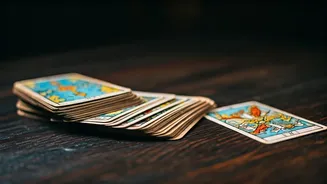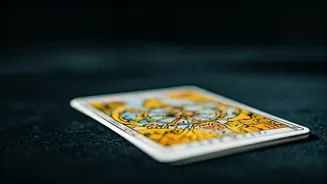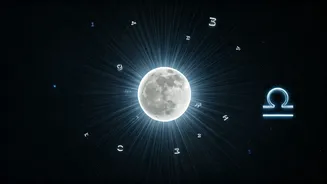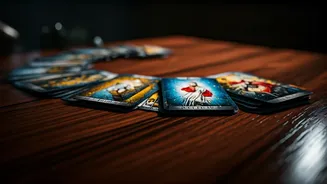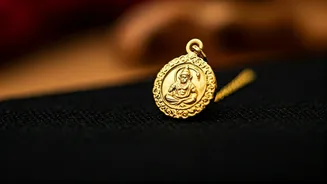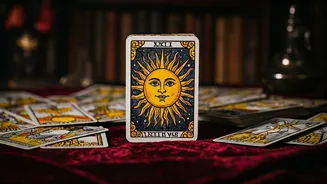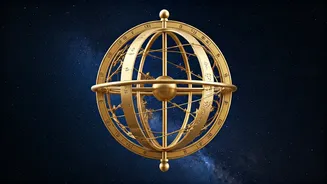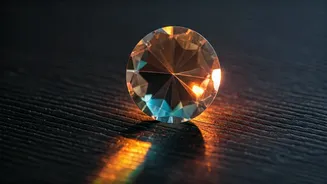Tarot's Mysterious Origins
The origins of the Tarot remain shrouded in mystery, with historical accounts pointing to a fascinating yet uncertain past. While some believe the cards
emerged from ancient Egyptian traditions, others suggest a European lineage, possibly tied to playing card games that gained popularity in the 14th century. Regardless of their exact genesis, the Tarot's influence is undeniable. Initially used for gaming, the cards gradually evolved, incorporating symbolic imagery and esoteric philosophies. This transformation saw the deck move beyond mere entertainment to become a tool for divination and self-exploration. The Tarot's journey reflects a rich tapestry of cultural influences, ultimately solidifying its place as a enduring symbol of mystery and intuition, a tool for introspection, and a portal to the subconscious. The exact path of its evolution, from simple playing cards to a profound system of symbols, is still subject to scholarly debate, adding to the allure of this enigmatic art form.
Major Arcana Unveiled
The Major Arcana constitutes the heart of the Tarot, a collection of 22 cards each carrying deep symbolic weight and representing pivotal life lessons and archetypal figures. These cards, often called the trump cards, depict profound stages of human experience, from the innocent beginnings represented by The Fool to the culmination of The World. Each card has multiple layers of meaning: The Magician, symbolizing resourcefulness and manifestation, or The High Priestess, representing intuition and hidden knowledge. The Empress embodies abundance and nurturing, while The Emperor signifies structure and authority. These cards tell a story of human experience, showing birth, growth, challenges, and fulfillment. The Major Arcana provides the groundwork for understanding the broader themes of a Tarot reading, acting as guideposts on a journey of self-discovery and insight. Their powerful imagery and evocative symbolism make them an important part of the Tarot's storytelling and spiritual exploration. Each card's placement within a spread offers valuable clues about an individual's journey.
Minor Arcana Explained
The Minor Arcana complements the Major Arcana by representing the everyday aspects of life: emotions, relationships, and challenges. The Minor Arcana is structured around four suits – Wands, Cups, Swords, and Pentacles – mirroring the elements of Fire, Water, Air, and Earth respectively. Wands embody passion, creativity, and energy; Cups, representing emotions and relationships; Swords, symbolizing intellect, conflict, and truth; and Pentacles, connected to material possessions, security, and the physical world. Each suit contains cards numbered from Ace to Ten, followed by Court Cards: Page, Knight, Queen, and King. These cards, acting like people in a reading, depict personality traits and societal roles. The Minor Arcana delivers insights into the details of daily life: the opportunities, conflicts, and relationships that shape our path. Its intricate symbolism offers a nuanced understanding of events, emotions, and decisions. When reading the Tarot, the Minor Arcana works in concert with the Major Arcana to generate an in-depth reading, combining broad themes with granular details.
Reading the Cards
Conducting a Tarot reading involves a ritual that helps create an atmosphere of introspection and insight. Begin by selecting a deck and familiarizing yourself with its imagery. Before beginning, many practitioners choose a space that is quiet and free of distractions. After shuffling the deck, focus on the question or topic at hand, allowing the subconscious to guide the selection of cards. Various spreads provide different perspectives: a simple three-card spread focuses on the past, present, and future, while more complex spreads, like the Celtic Cross, offer more detailed insights. When interpreting, consider the symbolism of each card alongside its position in the spread. Pay attention to the relationships between cards and allow yourself to connect with the intuitive messages that emerge. Practice and patience are essential; the more you interact with the cards, the more your understanding deepens. Always approach readings with an open mind and a respect for the cards' symbolic language, allowing them to lead you on your personal journey.
Interpreting Card Meanings
The meanings of Tarot cards can be multi-layered and context-dependent, providing numerous possibilities of interpretation. Each card has a core meaning, often amplified or modified by the surrounding cards in a spread and the question at hand. For example, The Sun card usually signifies joy, success, and positivity, but in a reading about a career issue, it could highlight a project’s brilliant achievements. Consider each card’s image, symbolism, and number to understand its significance. Intuition is vital; trust your inner voice as it recognizes the feelings that the cards stir. Different sources can expand your understanding of the cards. Books, websites, and experienced readers provide multiple interpretations, adding depth to your ability to connect with the cards. Remember that Tarot isn't about predicting the future; it's a tool for self-understanding and guidance. The cards provide perspectives and encourage awareness, empowering you to make informed decisions and discover the path ahead. The key is to see the images on each card as doorways to intuition.
